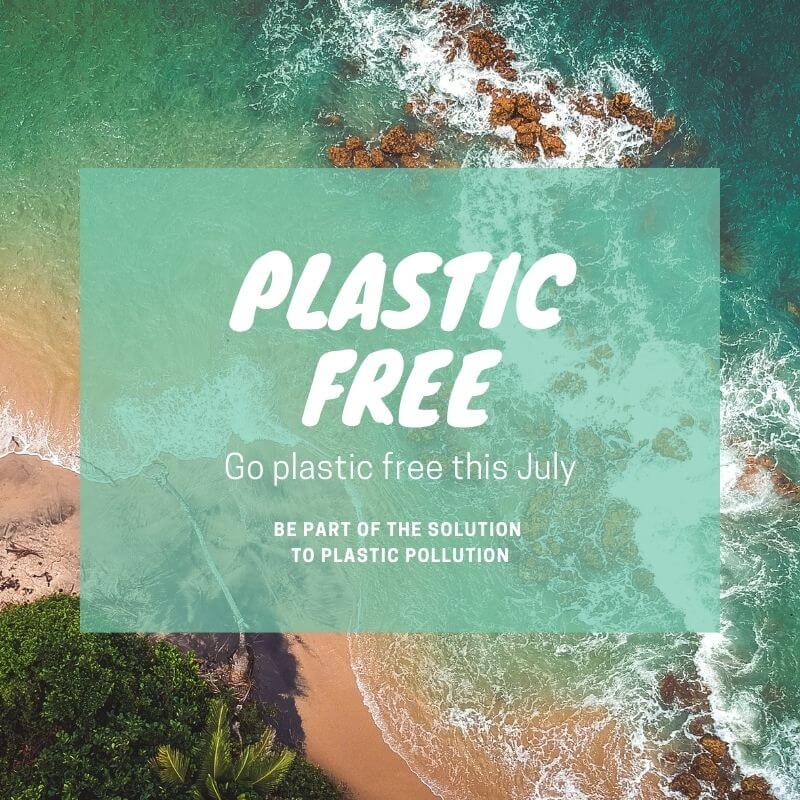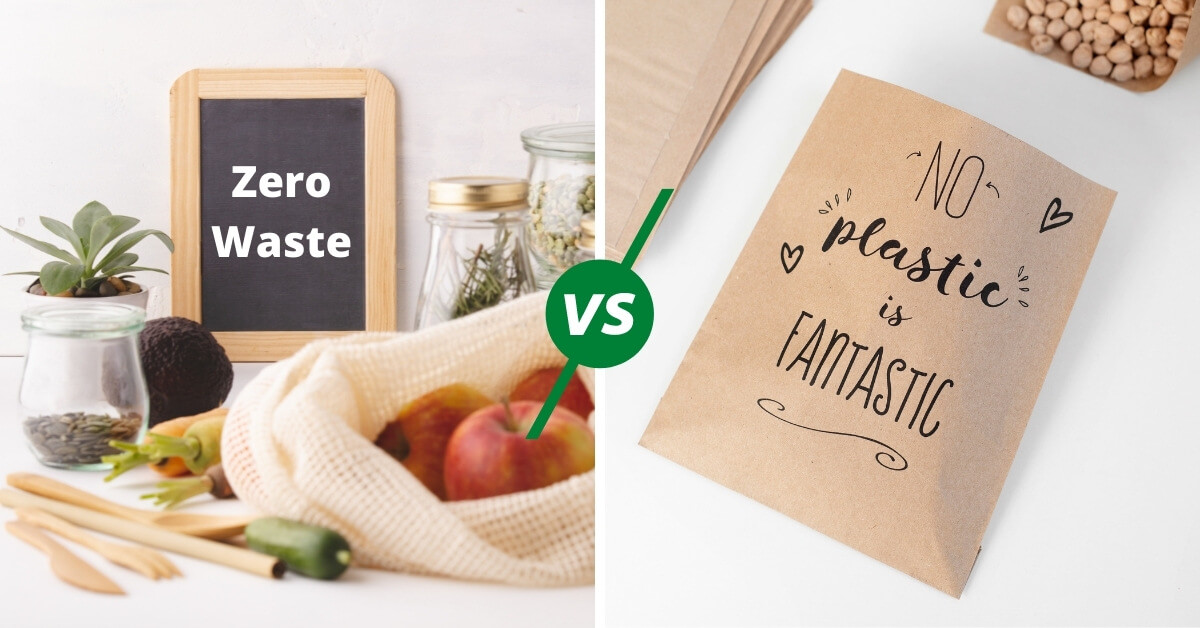To answer the question in simple words, going zero waste and plastic-free are not the same. Zero waste focuses on sending nothing to the landfill. It’s about circularity. While going plastic-free refers to reducing plastic use and living without plastics as much as possible. Both these terms zero waste and plastic-free always keep popping up, be it through the Plastic-Free July Challenge or when there are Ted talks about sustainability.

Yes, both zero waste and plastic-free are positive steps towards a more sustainable future, and they are definitely more than just some sustainability-related buzzwords we hear every day. However, do we really know what these terms actually mean, and what differentiates one from the other? Let’s have a closer look at the answers to these questions in this article.
What is zero waste?
In simple terms, the concept of zero waste says to send nothing to landfills. It’s all about being conscious about and creative with the waste you generate, and also knowing what happens to your trash. And yes, it’s a whole journey before you, too, start fitting your trash in a mason jar.
Wondering how you can do it all? Well, it’s simple, you can switch to a zero-waste lifestyle (even on a budget) by making conscious choices and efforts and not giving up. Having a zero-waste lifestyle is all about the ‘5 Rs‘ – Refuse, Reduce, Reuse, Rot, and Recycle.
The zero waste principles
- Refuse – Understanding the importance of saying ‘No’ to things we do not need.
- Reduce – It’s all about being conscious about things we buy. Like you can easily DIY some skincare products or cleaning products in your kitchen, so you need not buy them.
- Reuse or repurpose (as we like to call it!) – This stands true for almost everything; you can reuse old glass jars, clothes, toothbrushes, newspapers, food scraps, etc.
- Rot – If reusing is not an option, consider composting as the next best thing. It is super easy to compost at home, so you can get started right away too.
- Recycle – And when none of the above works, keep recycling as a last resort; most importantly, do it right. Don’t wishcycle by adding non-recyclable items to the recycling bin.
Having a zero-waste lifestyle is not about a set of rules or dos and don’ts that you need to follow. It’s simply a collection of small efforts we can make in our day-to-day lives to minimize our waste and live a more sustainable life. You can surely take the help of books on zero waste or zero-waste influencers online. But in the end, it’s all about the choices we make to bring about change in our lives, to contribute to a bigger impact together.
Related Articles:
- 50 Simple Tips For Zero Waste Living
- 14 Zero-Waste Shopping Tips To Follow On Your Next Grocery Run
- The Ultimate Guide To Set Up Your Zero-Waste Wardrobe
What is plastic-free?
Plastic is everywhere today, from our kitchen to our oceans. Most things found in coastal cleanups had plastic in them. The scariest part is that plastic has slowly made its way into the food chain and to our plates too. Moreover, it cannot be destroyed, and only a small percentage of the plastic the world uses actually gets recycled. So, yes, plastic is a huge problem, and a plastic-free life is one possible solution. The Plastic-Free July Challenge is trending. But, what exactly is a plastic-free life, and how can you achieve it?
A plastic-free life, just as the name suggests, means living without plastics and sending less of them to the landfill as plastics cannot biodegrade. This includes visible plastics such as packaging, disposables, food containers, cosmetics, menstrual products, medicines, and other things we use that are made of or contain plastics. But, this also includes hidden plastics (and microplastics) like the ones found in our sunscreen, wet wipes, tea bags, or even in the clothes we wear.
Is it possible to go completely plastic-free?
Life without plastics might sound impossible, but it is very much doable to an extent now as there’s more awareness, acceptance, and plastic-free alternatives available. However, it might not be practically possible to have a 100% plastic-free life because plastics have become an almost irreplaceable part of the system. There will be times when one can not just skip plastics. For example, you can always get a takeaway in your reusable containers, but a chemist will not agree to put medicines in a mason jar. And that’s ok!
It’s not important to be perfect. But be consistent even while you’re imperfect at it. A simple example here can be: Say we skip 5 plastic straws every week by carrying a reusable one. That makes 260 plastic straws a year. Now just do the math and think about how many more straws we can skip in our entire life. And now imagine the number of straws, a family of four can stop using. So, yes; going 100% plastic-free might not be possible, but all the small efforts we make can bring about a positive change.
Related Articles:
- 8 Books To Guide You Through Your Plastic-Free Journey
- 5 Everyday Products That Are Polluting Our Oceans
- Waste-Free Ways To Deal With Single-Use Plastics You Already Own
How are zero waste and plastic-free different?
Zero waste and plastic-free have a lot in common, which is why they are often confused to be the same thing. Both of them –
☘️ promote a more sustainable lifestyle and have a common goal: to help save the planet.
☘️ want us to make conscious choices to minimize the waste we generate by reducing, reusing, and lastly, recycling.
☘️ talk about reducing and gradually stopping plastic consumption due to its impact on the environment.
We are consuming (or rather wasting) too many resources without a way to give them back to the planet. Earth Overshoot Day proves the point year after year. And plastic is a huge part of this process; be it in the form of packaging containers and wraps or as an ingredient in our skincare regime. Hence, both zero-waste and plastic-free life can help us live more sustainably.
So, to answer our initial question: what differentiates zero waste and plastic-free? Having a plastic-free life is a part of zero-waste living. It is safe to say that to start a zero-waste lifestyle, the first step is to go plastic-free i.e., refuse, reduce and reuse.
And you don’t really need to choose between the two. You can start skipping single-use plastics while shopping in bulk and reusing old clothes. Because in the end, whichever you choose: zero waste, plastic-free, or both; it is going to be a step towards a more sustainable life.










